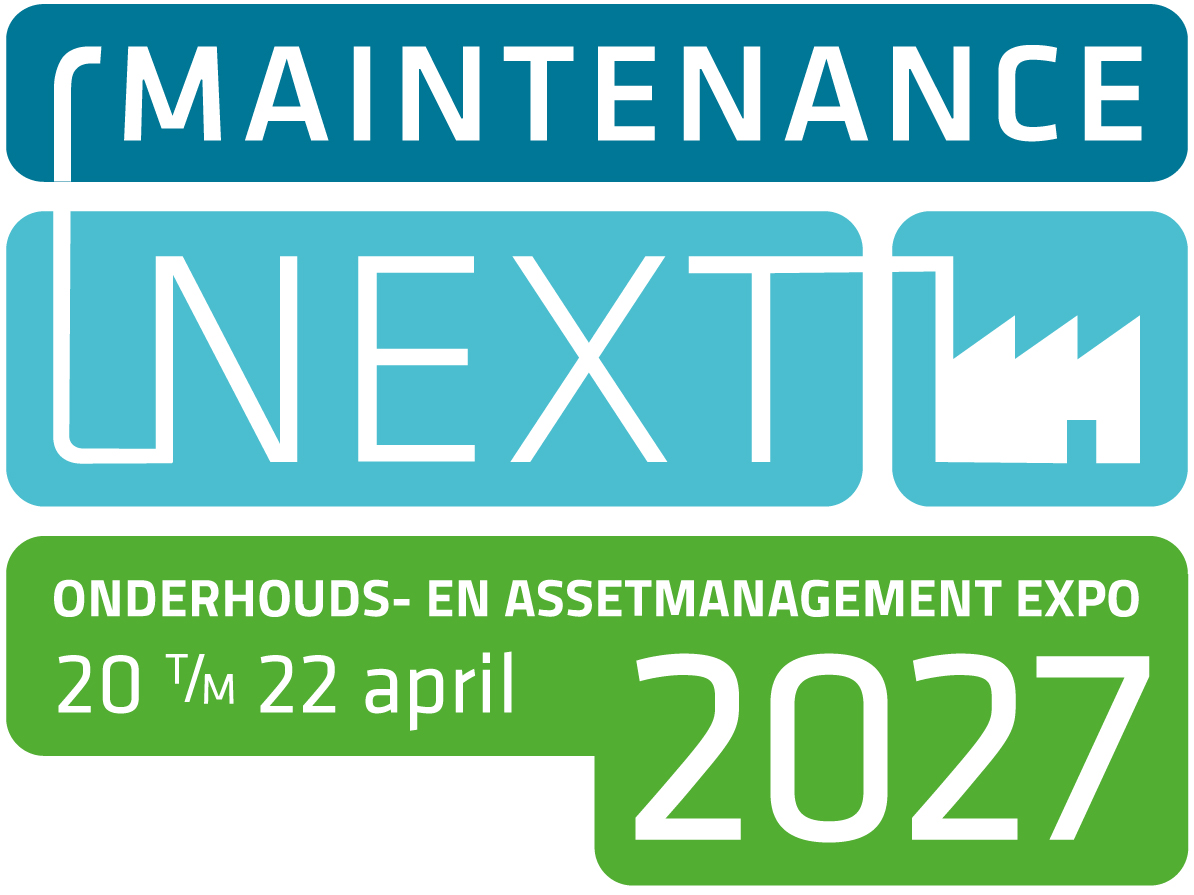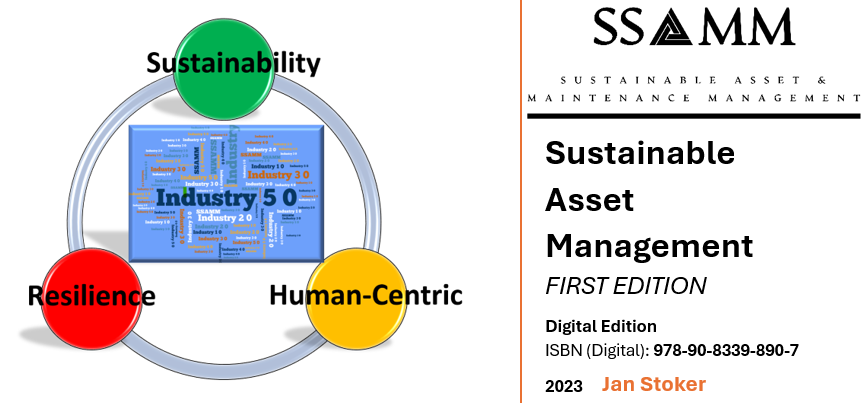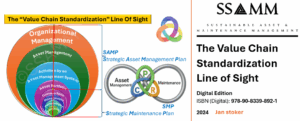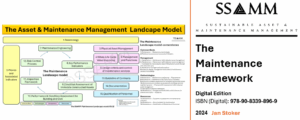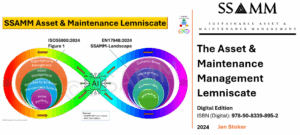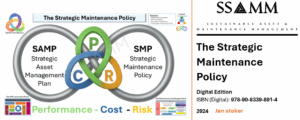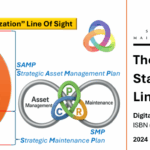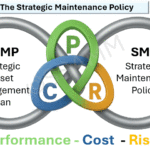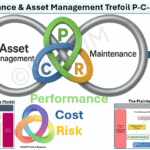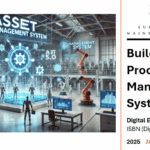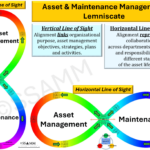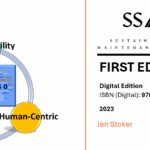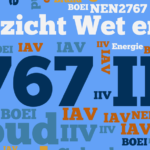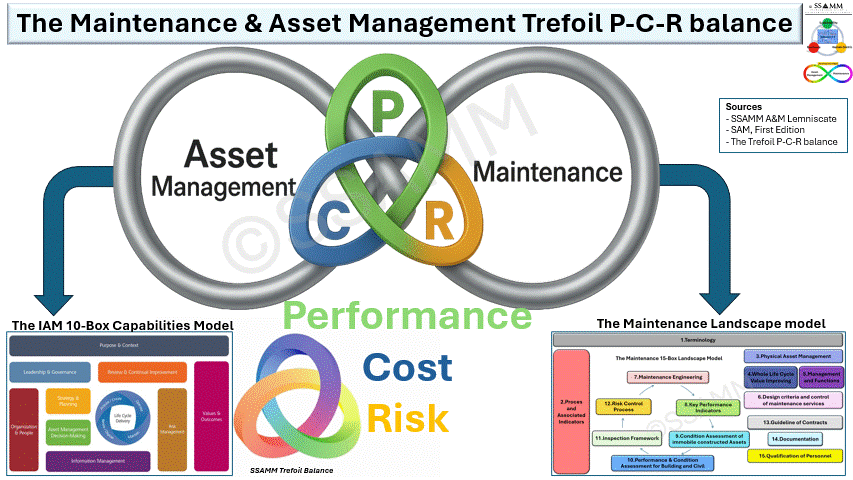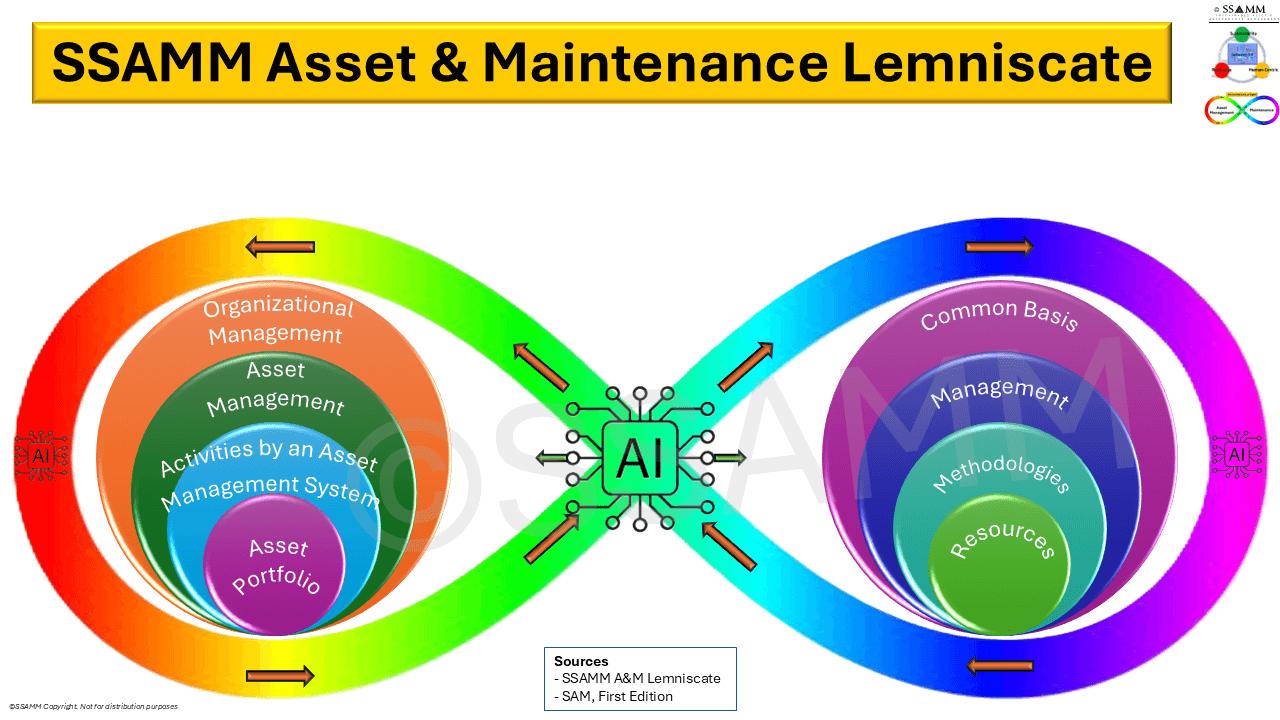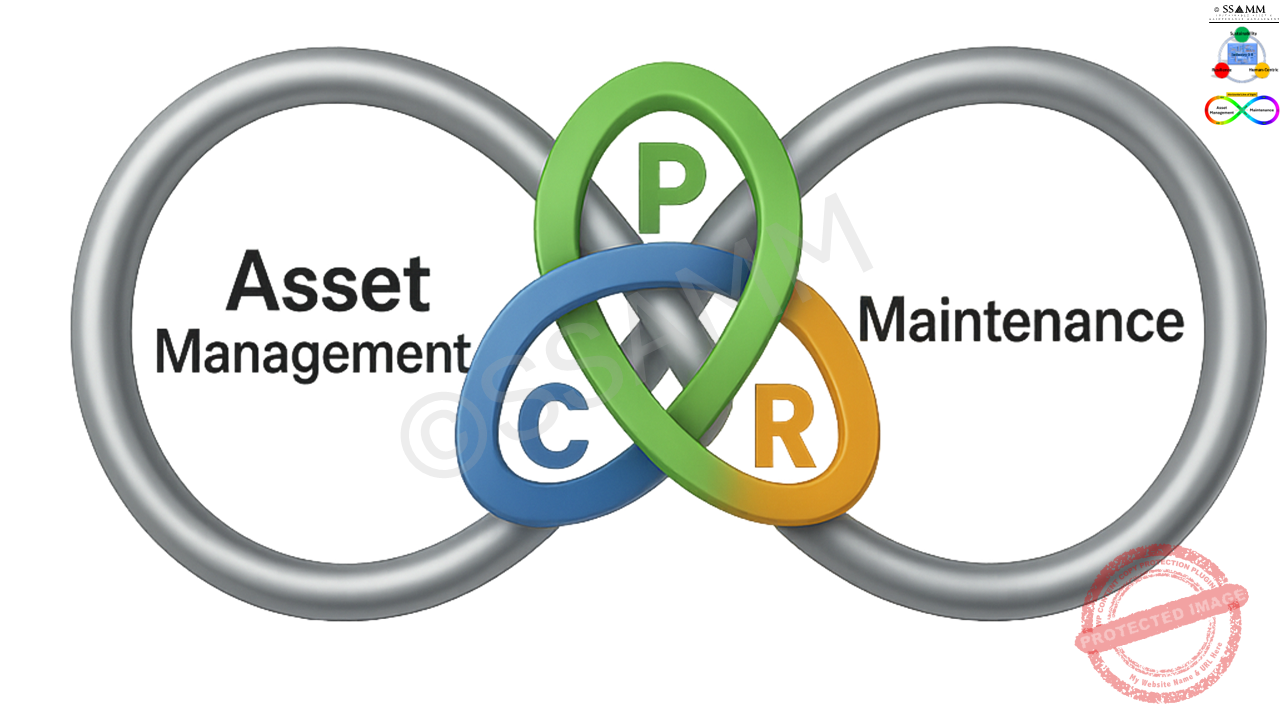Publication reference
Title: The P-C-R Trefoil Balance
Author: Benjamin Stoker
Publisher: SSAMM (Click Here)
Publication platform: SSAMM Academy – ssammeducation.com
ISBN/EAN: 978-90-8339-893-8
This restricted web article provides an overview and selected extracts from the publication The P-C-R Trefoil Balance (ISBN/EAN 978-90-8339-893-8). It is made available exclusively to registered SSAMM Academy clients as part of their personal, non-transferable licence.
© 2024 Stoker / SSAMM. All rights reserved.
This content is provided under a personal, non-transferable licence. Unauthorised sharing of logins, screenshots, files or copies (in whole or in part) is not permitted
The approach is normatively anchored in the ISO 55000:2024 Asset Management System and the CEN/TC 319 Maintenance Landscape (EN 17485, EN 17007, EN 16991) and is complemented by the Asset Management BowTie and the Industry 5.0 focus on human-centricity, sustainability and resilience. Conceptually, the trefoil replaces vague trade-off language with a documented statement of dominance; computationally, it introduces normalised P–C–R indices and two scoring forms (a transparent additive score and an interaction-aware Trefoil Balance Index) so that priorities can be calculated, compared and audited.
By embedding this gate in strategic, tactical and operational decisions, and by mapping it onto the EN 17007 maintenance processes and associated roles, organisations obtain a shared grammar for P–C–R, stronger line-of-sight from SAMP/AMP to execution, and reconstructable decision records that support assurance and continual improvement in line with ISO 55000.
The full article elaborates the mathematical formulation, worked examples and implementation templates that underpin this summary.
Application for PCR Trefoil inlog- Concept draft extending A&MM Lemniscate
- Fisrst draft 5 April 2025
- Updated 17 August 2025
- Published 9 September 2025
- Published SSAMM Social Media platforms October 2025
Maintenance Fundamentals SAM, First Edition Keynote Āpōpō Congres 2026 Follow Sustainable Asset Management for latest updates
Countdown SSAMM Academy Module 1
Explore the SSAMM Academy Asset Management and Maintenance Management courses.
Click Here for the Smart information page
Author: Ing. Jan Stoker MSc. MEng. AMCP. CFAM Follow Jan Stoker
1. Essence of the P-C-R Trefoil Gate
The SSAMM Trefoil P–C–R Balance starts from a simple but demanding premise: Performance (P), Costs (C) and Risk (R) must be treated as one integrated system, not as three competing objectives. In every significant Asset and Maintenance Management decision, these three dimensions co-determine the realised value of an asset system over its life cycle.
ISO 55000 defines Asset Management as the coordinated activity of an organisation to realise value from assets, where value is typically expressed as a balance of service performance, lifecycle costs and managed risk. The trefoil concept operationalises this definition by placing a single governance gate at the centre of the Asset & Maintenance Management (A&MM) lemniscate. At this gate, P, C and R are not treated as abstract talking points but as measurable, comparable and prioritised dimensions under explicit thresholds.
The trefoil knot is used as the core metaphor and discipline. It represents one continuous band (a single value system) forming three lobes (P, C and R). At each decision gate one lobe is temporarily placed “over” the others to make the local priority explicit—P-over, C-over or R-over—while the loop itself remains unbroken. This visual and conceptual structure reflects real practice: lifting performance typically shifts cost and risk; cost savings reshape risk and sometimes performance; risk controls affect both cost and delivered service.
The contribution of the approach is twofold. Conceptually, it provides a single decision language that replaces vague “trade-off” narratives with a documented statement of dominance under clear thresholds. Computationally, it proposes a pair of complementary scoring forms—a transparent additive score and an interaction-aware Trefoil Balance Index (TBI)—so that priorities can be calculated, compared and audited across portfolios, projects and interventions. The aim is not to replace professional judgement, but to discipline and document it so that decision-making becomes more consistent, explainable and learnable over time.
The Trefoil Balance. Click To Enlarge
We appriciate your thoughts & comments
2. Structural and Normative Foundations
The A&MM lemniscate provides the structural backbone. It is a continuous loop with two halves. The left half represents Asset Management intent: purpose, stakeholder needs, value definitions, risk appetite and objectives, expressed through documents such as the Strategic Asset Management Plan (SAMP) and Asset Management Plans (AMP). The right half represents Maintenance execution: policies, processes, resources and work that give effect to this intent in the field.
The trefoil gate is deliberately positioned at the centre of the lemniscate, where intent and execution meet. Every significant translation from strategy to work—and every feedback loop from execution to assurance—passes through this gate. At that point, thresholds for minimum performance (Pmin), maximum acceptable risk (Rmax/ALARP) and cost constraints (Ccap, TCO/NPV) are applied at the same moment that a dominant lobe is declared. The outcome is a reproducible decision record showing what was decided, why it was acceptable and how it will be verified. Over time, the lemniscate becomes a documented learning loop rather than a conceptual figure.
The trefoil is anchored in two complementary normative landscapes:
- The Asset Management landscape (IAM/ISO) defines the capabilities required to realise value: leadership, strategy and planning, risk management, information and decision-making, performance evaluation and improvement. ISO 55000:2024 frames these as a system of coordinated activities, not isolated functions. The trefoil gate gives this system a tangible “moment of truth”: assurance can ask not only “what happened?” but also “which priority was declared, under what thresholds, and based on which evidence?”.
- The Maintenance Landscape (CEN/TC 319) makes the right half operational. EN 17485 provides the framework for maintenance within physical Asset Management and defines the policy layer in which thresholds and principles for action are encoded. EN 17007 structures the maintenance processes into recognisable building blocks (preventive, corrective, improvement, optimisation, resources, HSE, data, documentation, planning, budgeting, materials, tolerances, etc.). EN 16991 formalises risk-based maintenance so that acceptance criteria are aligned with risk appetite and regulatory obligations. Together they ensure that decisions taken at the trefoil gate become coherent plans, coordinated resources and verifiable work rather than isolated projects.
The Trefoil A&MM Lemeniscate
Two additional pillars complete the structural picture. The Asset Management BowTie provides a disciplined view of threats, barriers and consequences, ensuring completeness of control thinking. The trefoil stands orthogonal to this: when multiple barrier configurations are feasible, it clarifies which pillar (P, C or R) is temporarily dominant while preserving the BowTie logic. Finally, the Industry 5.0 perspective introduces non-negotiable constraints of human-centricity, sustainability and resilience. These constraints are expressed in the trefoil gate as explicit thresholds and rules, preventing them from becoming slogans detached from daily decisions.
3. The Trefoil Knot and Borromean Rings in Decision and Assurance
The trefoil knot is chosen because it mirrors the behaviour of P, C and R in real organisations: tightly coupled, yet needing context-dependent prioritisation. It is a single band (integration) forming three lobes (P, C, R). At each decision:
- One lobe is placed “over” the others to signal local dominance.
- Policy thresholds (Pmin, Rmax/ALARP, Ccap/TCO) are applied to guard against unacceptable sacrifice of any pillar.
- Evidence requirements are made explicit: which data sets, analyses and approvals support the proposed choice.
This simple but strict discipline changes the nature of governance. Instead of generic statements such as “we balanced performance, cost and risk”, a portfolio review or board paper can state: “for this gate, R-over: thresholds [Rmax, Pmin, Ccap] applied, indices [p, c, r] computed, score [U/TBI] and evidence [X, Y, Z] recorded.” Such records are far easier to explain, challenge, improve and audit.
The Borromean rings play a complementary role in the assurance domain. They represent indispensability: if any one of the three rings (P, C or R) is removed, the structure falls apart. The Borromean icon is therefore used where completeness of consideration must be checked—management reviews, audits, readiness checks before major interventions or commissioning decisions.
The distinction between the two icons is crucial:
- The Borromean rings ask: “Did we consider performance, costs and risk in a complete and coherent way?”
- The trefoil gate asks: “At this decision point, which pillar is temporarily dominant, under which thresholds and with what evidence?”
Keeping these roles separate avoids two common pathologies: (1) incomplete trade-off discussions with no assurance that all pillars have been considered, and (2) undocumented prioritisation where decisions are taken but the underlying logic is opaque. In practice, dashboards and reports can show both icons: Borromean for completeness, trefoil for priority.
The M&AM Trefoil Balance
4. Making P–C–R Computable and Actionable in Daily Work
To support comparability and learning, the trefoil logic is translated into a computable P–C–R balance. The emerging quantitative framework rests on three elements:
- Normalised indices (p, c, r) that place performance, cost and risk on a 0–1 scale relative to agreed references and thresholds.
- Two complementary scores:
- a transparent additive score (U) that is easy to explain but essentially linear;
- a Trefoil Balance Index (TBI) that treats P, C and R as interacting dimensions and can represent relative changes and diminishing returns more faithfully.
- Encoding of dominance, where the declared P-over, C-over or R-over status influences how scores are interpreted and how options are ranked.
This quantitative chapter is explicitly marked as “under development”. The current formulation is being piloted and refined, particularly with respect to weight calibration, treatment of uncertainty and data quality rules. The interim publication is intentional: the method is already usable, and transparency accelerates improvement by inviting scrutiny and feedback.
The trefoil gate is not a purely strategic instrument; it is designed to be embedded in daily work across three decision levels:
- At the strategic level, portfolios use the gate to shape long-term funding envelopes, performance commitments and risk appetite across asset systems.
- At the tactical level, programmes and networks apply the gate when setting maintenance concepts, spares strategies and intervention mixes for asset families.
- At the operational level, engineers and planners apply the gate to job plans, task intervals and Management of Change (MoC) events.
Cadence follows these levels: annual or multi-year cycles for strategic gates, quarterly reviews for tactical gates, and weekly or condition-triggered decisions for operational gates. Using one gate language across all levels prevents drift between high-level intent and day-to-day execution.
Within the Maintenance Landscape, trefoil decisions are mapped explicitly to the EN 17007 processes. Preventive maintenance (PRV) often runs R-over (safety and compliance first); corrective maintenance (COR) on critical functions frequently runs P-over (restoration of continuity dominates); optimisation (OPT) typically runs C-over (lifecycle-cost minima under fixed P and R thresholds). Improvement and design-out (IMP) may traverse all three dominance modes over the life of a project. Supporting processes—resources (RES), planning (SPP), budgeting (BUD), data/analytics (DTA), documentation (DOC), HSE, inspections (IST), services and contractors (SER), tolerances (TOL), management (MAN), material requests (MRQ), activities (ACT)—all use the same gate record, ensuring that what is decided at the gate appears consistently in work packages, contracts and performance reports.
Roles and responsibilities are defined in line with EN 15628 and the broader CEN/TC 319 suite. The Asset Manager owns value definition, risk appetite and the generic dominance policy by context. The Maintenance Manager translates gate outcomes into policies, resource plans, schedules and contracts. The Reliability Engineer (whether as a distinct role or distributed across functions) provides analyses, runs U/TBI calculations and tests sensitivity. Finance validates cost references and budget caps; HSE/Compliance safeguards risk thresholds and ALARP arguments; Engineers and Technicians execute the work and capture evidence in CMMS/EAM using the gate fields. When all parties share the trefoil vocabulary, hand-offs become clearer and fewer decisions are lost in translation.
A key principle is reconstructability. Each gate produces a lightweight but complete record: declared dominance, thresholds applied, indices (p, c, r), chosen score(s), selected option and the evidence list. Versioning these records with dates and owners supports internal reviews, external assurance and longitudinal learning. In an Industry 5.0 context, this record also provides the scaffolding for explainable automation: digital twins, prognostics and AI can propose options, but the gate still declares the explicit priority, thresholds and verification plan.
5. Benefits, Limitations and Development Path
Adopting the trefoil gate yields several immediate improvements. People stop treating Performance, Costs and Risk as three rival agendas and start speaking about them as one system with context-specific dominance. Governance becomes more transparent: portfolio and project decisions can be compared because they use the same language and fields; approval cycles shorten because the logic is visible rather than implicit. Line-of-sight becomes concrete: intent formulated in SAMP/AMP flows through the trefoil into maintenance policy, plans and job packages, and returns as evidence for assurance and continual improvement.
The framework also has explicit limitations. No single scalar score can capture every nuance of asset decisions, and the trefoil is not intended to substitute for professional judgement. The additive score U is simple and transparent but will not by itself represent interaction effects or diminishing returns. The multiplicative TBI handles interactions more naturally but depends on sensible weight/exponent choices and reliable normalisation. Data quality is a genuine constraint: weak risk data, inconsistent cost allocations or over-precise but poorly grounded figures can distort results and create false confidence. Tail risks may require additional risk measures (e.g. chance constraints or CVaR-style indicators) in specific contexts.
To address these issues, the development roadmap focuses on three concrete deliverables:
- A calibration guide explaining how to set references, thresholds and weights/exponents, using accessible methods such as MAUT/AHP and stressing periodic review.
- An uncertainty toolkit with pragmatic options for dealing with low-frequency/high-consequence events without over-complicating everyday gates.
- A starter workbook and gate templates (e.g. Excel/CSV plus CMMS/EAM fields) so that teams can compute indices, apply thresholds, capture dominance and store evidence in a consistent way.
Governance of the trefoil gate itself is kept deliberately light but explicit. Asset Management owns the rules of the gate (value definition, appetite, default settings and contexts for dominance); Maintenance owns execution and record completeness; Reliability, Finance and HSE/Compliance provide specialist assurance.
The Trefoil A&MM Balance
Any change to thresholds or default weights is versioned and justified so that future reviewers can understand why past decisions were taken as they were.
Finally, the summary emphasises what success looks like. Process indicators include the percentage of decisions with complete gate records, cycle time from proposal to decision and early detection of threshold breaches. Outcome indicators include service performance relative to Pmin, lifecycle cost variance to Ccap/TCO, and exceedances relative to Rmax/ALARP. Learning indicators include stability of settings, audit findings closed on first pass and correlations between the Trefoil Balance Index and realised outcomes.
Some elements will continue to evolve—particularly the quantitative treatment of tail risk and the calibration of parameters across diverse asset classes. This is acceptable and, in fact, expected: the trefoil gate already creates value by making priorities explicit, anchoring them in policy thresholds and recording evidence in a reconstructable way, while remaining open to refinement as experience accumulates. In this sense, the P–C–R Trefoil Balance not only supports a living Asset Management System in the ISO 55000 sense, it also models the same posture of structured learning and continual improvement that it seeks to enable in practice.
This one-pager summarises the core concepts, structures and claims of the P–C–R Trefoil Balance. The full article elaborates the mathematical formulations, worked examples, detailed mappings to standards and practical templates needed for implementation in specific organisations and asset systems.
Appriciate your thoughts & comments



